What's New
Displaying results 91 - 100 of 4052
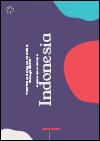
Conversion Therapy Practices against Transgender Persons in India, Indonesia, Malaysia and Sri Lanka
Resource | Publications,
The Asia Pacific Transgender Network (APTN), together with its country partners, embarked on an ambitious and much-needed research project to study the various forms of conversion therapy practices being implemented against transgender (trans) and gender diverse people in India, Indonesia, Malaysia, and Sri Lanka. This evidence-generating project aimed to explore how trans and gender diverse people in these countries have been subjected to conversion therapy practices by documenting their personal narratives and lived experiences. Further, it sought to investigate how the existing national legal, policy, and programmatic frameworks create an environment in which these harmful practices can thrive.
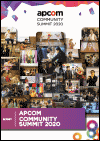
Resource | Publications,
Amidst the COVID-19 pandemic, the APCOM Community Summit 2020 brought together delegates, speakers, community members and participants from across the Asia-Pacific Region for the first-ever hybrid conference, convened using a combination of face-to-face and virtual conferencing. The impact of COVID-19 on people living with HIV and key populations, has been felt across the region, revealing glaring inequalities and amplifying the need for better co-ordination among the community. However, despite the challenges of the past year, the community response to the pandemic has been inspirational, demonstrating the vital role of community-based organizations as lifelines for people living with HIV and key populations, as well as the wider community.
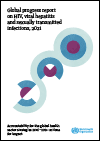
Resource | Publications,
This report provides accountability for the 3 Global Health Sector Strategies (2016-2021) on HIV, Viral Hepatitis and the STIs. The report assesses the impact, progress and gaps, and identifies actions to improve impact. The report also provides new data to assess the achievement of the SDGs targets and gaps towards the Thirteenth General Programme of Work (GPW 13) targets and a decade towards elimination.
The report describes WHO’s important contributions at regional and global level and identifies common actions across the 3 disease areas as well as gaps and priorities as a baseline for the next strategies.
More specifically, the report reviews progress in the health sector response along each of the strategy’s strategic directions, and in each WHO region, and discusses the opportunities for overcoming the remaining challenges to achieve universal access to effective HIV/STI/Hepatitis interventions and for contributing to the broader goal of universal health coverage.
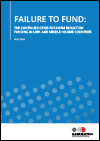
Failure To Fund: The Continued Crisis for Harm Reduction Funding in Low- and Middle-income Countries
Resource | Publications,
This report explores the state of harm reduction funding in low- and middle-income countries, drawing upon existing public data on domestic funding and information collected from international harm reduction donors. The data shows that we are further away from meeting the needs of people who use drugs than ever before.
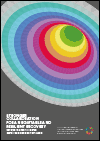
Resource | Publications,
This second, annual Global Action Plan for Healthy Lives and Well-being for All (SDG3 GAP) progress report illustrates how the SDG3 GAP is providing an important, long-term improvement platform for collaboration among 13 agencies in the multilateral system as they support countries on the path towards an equitable and resilient recovery from the COVID-19 pandemic and further progress towards the health-related SDGs.
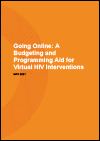
Resource | Publications,
Going Online is a vision and evolving framework for how HIV programs can use online and mobile platforms to accelerate impact toward meeting their HIV education, prevention, testing and treatment objectives. The LINKAGES project developed this vision to help populations facing the greatest HIV risks make connections to life-affirming and lifesaving services in an increasingly connected world. The vision will also help other stakeholders in the HIV response, including governments and community organizations seeking to modernize and diversify approaches, to reach and engage people in HIV services in ways that meet their needs and preferences.
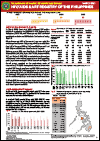
Resource | Fact Sheets,
In March 2021, there were 1,041 confirmed HIV-positive individuals reported to the HIV/AIDS & ART Registry of the Philippines (HARP). Fifteen percent (156) had clinical manifestations of advanced HIV infectiona at the time of testing.
Ninety-five percent (991) of the reported cases were male. The median age was 28 years old (age range: 6-65 years old). More than half of the cases (52% or 538) were 25-34 years old and 30% (316) were 15-24 years old at the time of diagnosis.
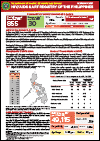
Resource | Fact Sheets,
In February 2021, there were 855 confirmed HIV-positive individuals reported to the HIV/AIDS & ART Registry of the Philippines (HARP) and were accounted to the total (84,610) reported cases since January 1984. Moreover, 17% (147) had clinical manifestations of advanced HIV infection at the time of testing.
Ninety-four percent (804) of the reported cases were male. Of the total male cases, 2% (19) reported their self-identity as female (transgender women) at the time of testing.

Resource | Tools,
This publication, produced by the World Health Organization and UNICEF, has been developed to support the implementation of the WHO Guidelines on mental health promotive and preventive interventions for adolescents, released in 2020. The Toolkit includes a core set of evidence-informed strategies to promote and protect adolescent mental health. These strategies are: the implementation and enforcement of laws and policies; the creation of safe environments; the provision of support to parents and other caregivers; and the implementation of programmes focused on helping adolescents develop social skills and emotional intelligence. Tools to guide implementation and examples of programmes already introduced around the world are included.
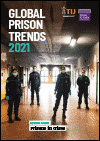
Resource | Publications,
Health crises and other emergencies are not unprecedented in prisons. This year’s Special Focus examines prisons in crises, and how authorities respond to health crises, natural hazards and extreme weather, or in fragile and conflict-affected settings. We look at how prisons and the people within them are affected, as well as the involvement of prison populations in times of such crises and consider what measures authorities can put in place for better preparedness and response.





